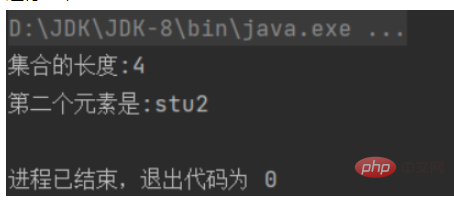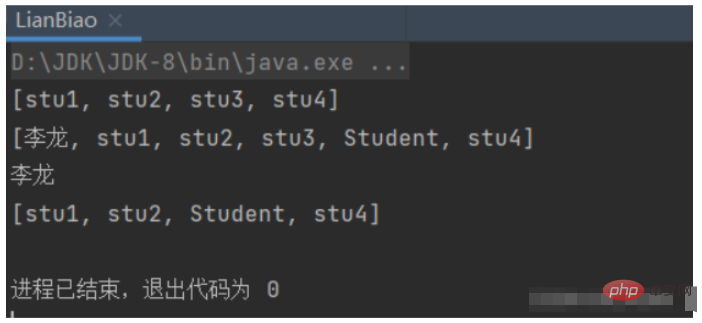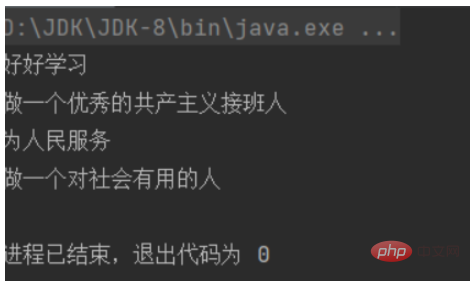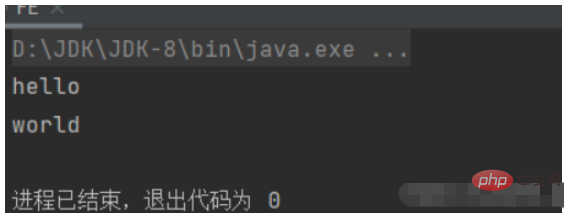Home >Java >javaTutorial >How to use Java List interface, Iterator interface and foreach loop
How to use Java List interface, Iterator interface and foreach loop
- 王林forward
- 2023-04-20 17:31:081624browse
List interface
The List interface inherits the Collection interface and is a single-column collection. Duplicate elements are allowed in the List collection. All elements are stored in a linear manner. In the program, the specified elements in the collection are accessed through indexes. The elements are stored sequentially, that is, the order in which the elements are stored is consistent with the order in which they are retrieved.
ArrayList collection
ArrayList is an implementation class of the List interface, which encapsulates a variable-length array object inside ArrayList.
package 集合类;
import java.util.ArrayList;
import java.util.Arrays;
public class FengZhuanglei {
public static void main(String[] args) {
ArrayList list=new ArrayList();
list.add("stu1");
list.add("stu2");
list.add("stu3");
list.add("stu4");
System.out.println("集合的长度:"+list.size());
System.out.println("第二个元素是:"+list.get(1));
}
}Running result

It can be seen from the running result that ArrayList and array index both start from 0, because the bottom layer of ArrayList collection uses an array to When saving elements, adding or deleting elements at a specified position will result in the creation of a new array, which is relatively inefficient, so it is not suitable for a large number of additions and deletions. However, elements can be found through indexing, which also increases the difficulty of finding elements. s efficiency.
LinkedList collection
In order to solve the problem of low efficiency in adding and deleting elements in the ArrayList collection, the LinkList collection is introduced. A two-way circular linked list is maintained inside the LinkList collection. Each element of the linked list They all use references to remember their previous and next elements, so all the elements can be connected. When inserting a new element, you only need to modify the reference relationship between the elements, which can increase the number of elements. Efficiency of add and delete operations.
package 集合类;
import java.util.LinkedList;
public class LianBiao {
public static void main(String[] args) {
LinkedList link =new LinkedList();
link.add("stu1");
link.add("stu2");
link.add("stu3");
link.add("stu4");
//打印集合中的元素
System.out.println(link.toString());
//在集合中插入元素
link.add(3,"Student");
//在集合的第一个位置插入元素
link.addFirst("李龙");
System.out.println(link);
//取出集合中的第一个元素
System.out.println(link.getFirst());
//删除集合中的元素
link.remove(3);
//删除集合中的第一个元素
link.removeFirst();
System.out.println(link);
}
}Running result

Iterator interface
Iterator is mainly used to traverse the elements in Collection. Iterator is also called iterator .
package 集合类;
import java.util.ArrayList;
import java.util.Iterator;
public class DieDai {
public static void main(String[] args) {
ArrayList list=new ArrayList();
list.add("好好学习");
list.add("做一个优秀的共产主义接班人");
list.add("为人民服务");
list.add("做一个对社会有用的人");
Iterator it= list.iterator();
//判断ArrayList是否存在下一个元素
while(it.hasNext()){
Object obj=it.next();
System.out.println(obj);
}
}
}Running result

package 集合类;
import java.util.ArrayList;
public class FE {
public static void main(String[] args) {
ArrayList list=new ArrayList();
list.add("hello");
list.add("world");
for(Object obj: list){
System.out.println(obj);
}
}
}Running results

The above is the detailed content of How to use Java List interface, Iterator interface and foreach loop. For more information, please follow other related articles on the PHP Chinese website!

